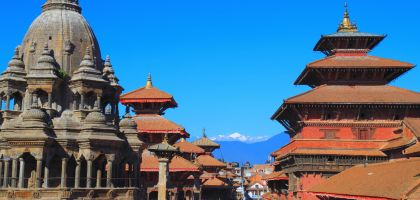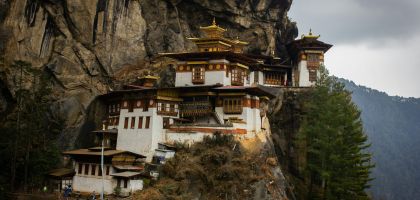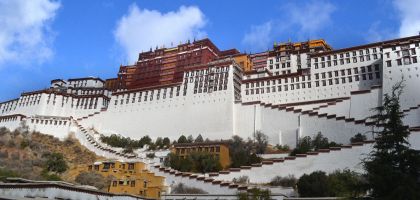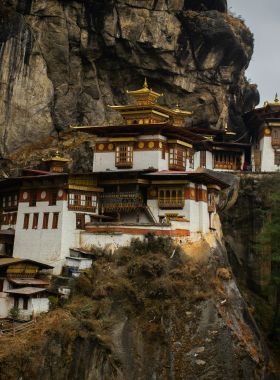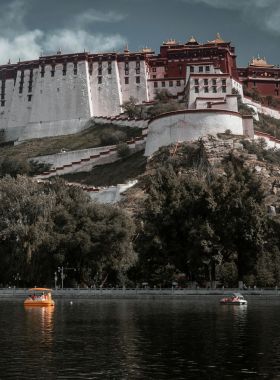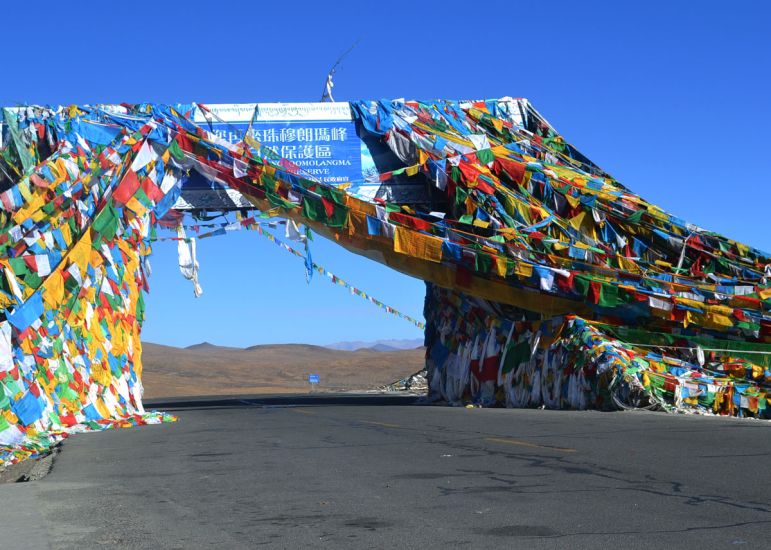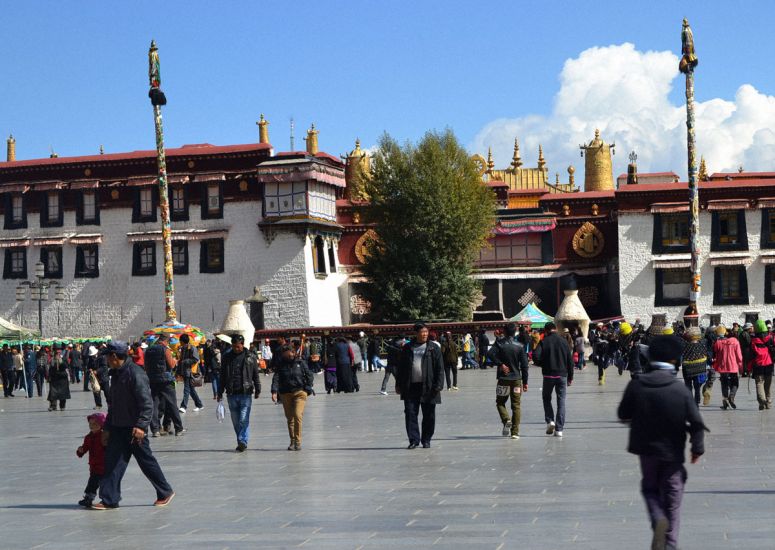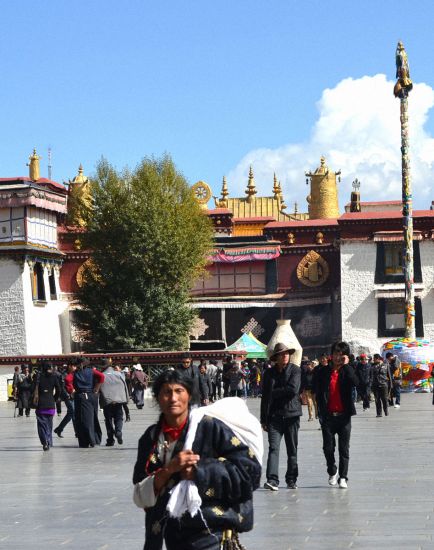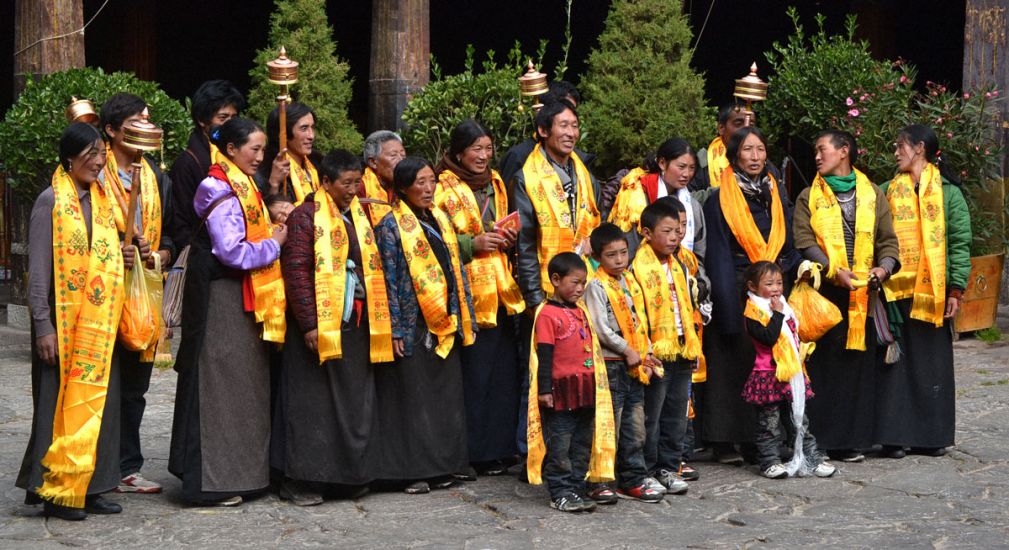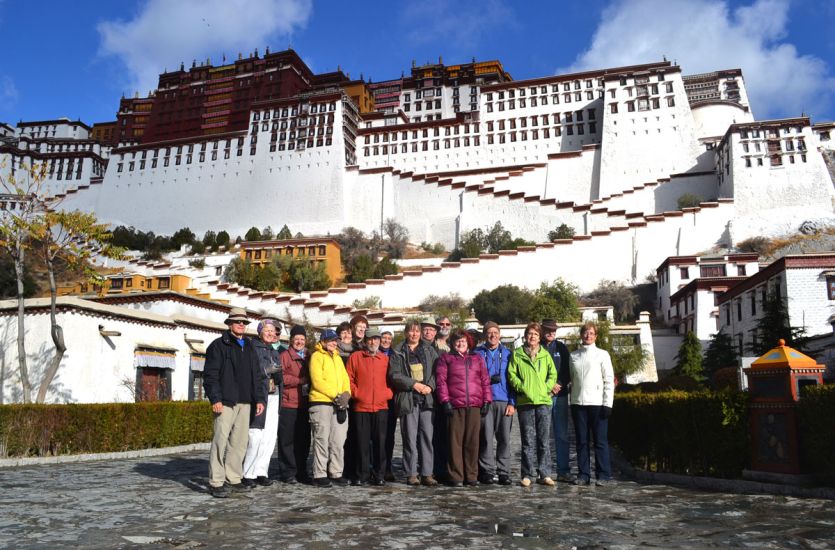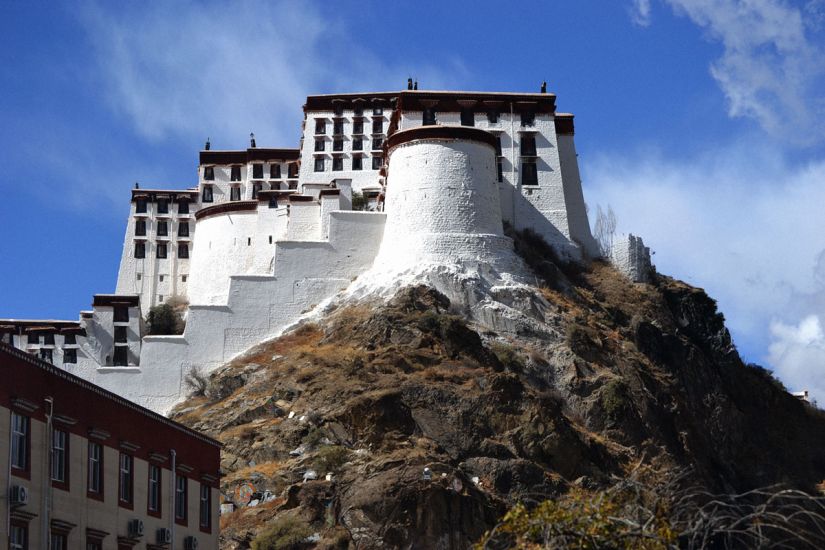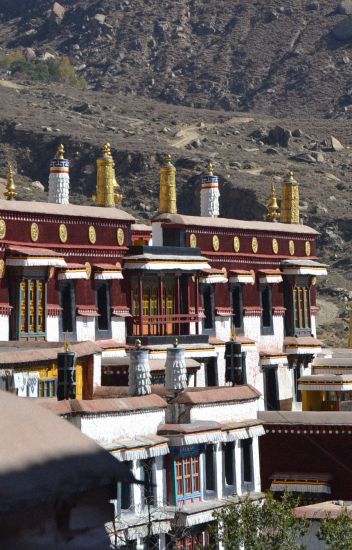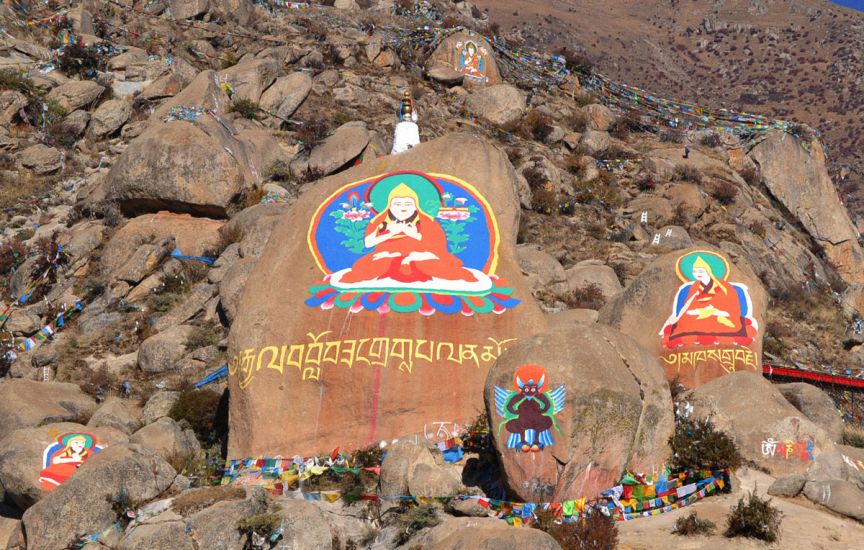Mystical Tibet Tour
7 Days / Tibet
Activity
Difficulty Level
Destinations
Trip Start / End
Max Altitude
Accommodation
Travel Style
Best time to travel
Personalized Travel Advice

Dev Raj Nepal
+977 9851096523
Detailed Itinerary
01
DAY
01
Arrive at Lhasa’s Gonggar Airport, where you will be warmly greeted by our representative and transferred to the city. Check into your hotel and take the rest of the day to relax and acclimatize to the altitude.
Arrival in Lhasa
Arrive at Lhasa’s Gonggar Airport, where you will be warmly greeted by our representative and transferred to the city. Check into your hotel and take the rest of the day to relax and acclimatize to the altitude.
02
DAY
02
Begin your adventure with a full day of sightseeing, immersing yourself in the cultural and spiritual essence of Lhasa. Start at the iconic Potala Palace, a UNESCO World Heritage Site that dominates the skyline and offers sweeping views of the city. Wander through its labyrinthine halls, filled with murals, statues, and treasures that tell the story of Tibet’s spiritual rulers. Continue to Sera Monastery, one of the three great Yellow Sect monasteries of Lhasa, renowned for its scholarly atmosphere and lively debates between monks. End the day at Norbulingka, the stunning summer palace of the Dalai Lama, surrounded by tranquil gardens and serene ponds. Return to your hotel to reflect on the day’s discoveries. Overnight in Lhasa.
Lhasa Exploration
Begin your adventure with a full day of sightseeing, immersing yourself in the cultural and spiritual essence of Lhasa. Start at the iconic Potala Palace, a UNESCO World Heritage Site that dominates the skyline and offers sweeping views of the city. Wander through its labyrinthine halls, filled with murals, statues, and treasures that tell the story of Tibet’s spiritual rulers. Continue to Sera Monastery, one of the three great Yellow Sect monasteries of Lhasa, renowned for its scholarly atmosphere and lively debates between monks. End the day at Norbulingka, the stunning summer palace of the Dalai Lama, surrounded by tranquil gardens and serene ponds. Return to your hotel to reflect on the day’s discoveries. Overnight in Lhasa.
03
DAY
03
The exploration of Lhasa continues today with a visit to Drepung Monastery, once the largest monastery in Tibet and a major center of learning. Wander through its massive courtyards and study the intricate Tibetan architecture. Then, head to the Jokhang Temple, the most revered pilgrimage site in Tibet, where the scent of incense fills the air and pilgrims from all walks of life circle the temple in devotion. Conclude your day with a stroll around the lively Barkhor Street, where the pulse of Lhasa is felt through its bustling shops, prayer wheels, and vibrant market stalls. Return to your hotel for a restful night.
Lhasa Exploration
The exploration of Lhasa continues today with a visit to Drepung Monastery, once the largest monastery in Tibet and a major center of learning. Wander through its massive courtyards and study the intricate Tibetan architecture. Then, head to the Jokhang Temple, the most revered pilgrimage site in Tibet, where the scent of incense fills the air and pilgrims from all walks of life circle the temple in devotion. Conclude your day with a stroll around the lively Barkhor Street, where the pulse of Lhasa is felt through its bustling shops, prayer wheels, and vibrant market stalls. Return to your hotel for a restful night.
04
DAY
04
After breakfast, take a one-hour scenic drive north of Lhasa to Ganden Monastery (4,500m / 14,760ft), one of the holiest and most revered sites in Tibet, which serves as the seat of the chief abbot of the Gelugpa Sect. Continue your journey to Drigung, where you will stay overnight in a guest house.
Drive to Ganden Monastery
After breakfast, take a one-hour scenic drive north of Lhasa to Ganden Monastery (4,500m / 14,760ft), one of the holiest and most revered sites in Tibet, which serves as the seat of the chief abbot of the Gelugpa Sect. Continue your journey to Drigung, where you will stay overnight in a guest house.
05
DAY
05
If permitted, witness the unique and sacred sky burial ceremony at Drigung, a rare and profound Tibetan ritual. This trek typically takes around 4 hours depending on the route taken. The path winds through rugged terrain and offers spectacular views of the surrounding hills and valleys.
Tridom Nunnery is situated in a picturesque valley, surrounded by towering cliffs and dotted with small hermitages and caves. The trek takes you through the Tibetan landscape, where you’ll experience the peaceful rhythm of life in the region, with stunning views of the barren yet beautiful hills. The nunnery itself is famous for its medicinal hot springs, believed to have healing properties that are especially beneficial for conditions like arthritis and gastritis. Spend the night in a local guesthouse
Sky Burial and Short Trek to Tridum Nunnery
If permitted, witness the unique and sacred sky burial ceremony at Drigung, a rare and profound Tibetan ritual. This trek typically takes around 4 hours depending on the route taken. The path winds through rugged terrain and offers spectacular views of the surrounding hills and valleys.
Tridom Nunnery is situated in a picturesque valley, surrounded by towering cliffs and dotted with small hermitages and caves. The trek takes you through the Tibetan landscape, where you’ll experience the peaceful rhythm of life in the region, with stunning views of the barren yet beautiful hills. The nunnery itself is famous for its medicinal hot springs, believed to have healing properties that are especially beneficial for conditions like arthritis and gastritis. Spend the night in a local guesthouse
06
DAY
06
On the return journey to Lhasa from Tridom Nunnery, you will pass through Yerpa, a site renowned for its meditation caves. Yerpa is a sacred place for Tibetan Buddhists, known for its serene atmosphere and its over 80 caves where monks have meditated for centuries. The caves are carved into the mountainside, offering a peaceful and contemplative space, surrounded by breathtaking views of the valley and the rugged Tibetan landscape. Overnight at Lhasa.
Return to Lhasa via Yerpa
On the return journey to Lhasa from Tridom Nunnery, you will pass through Yerpa, a site renowned for its meditation caves. Yerpa is a sacred place for Tibetan Buddhists, known for its serene atmosphere and its over 80 caves where monks have meditated for centuries. The caves are carved into the mountainside, offering a peaceful and contemplative space, surrounded by breathtaking views of the valley and the rugged Tibetan landscape. Overnight at Lhasa.
07
DAY
07
After breakfast, you will be transferred to the airport for your onward journey. Your Tibet tour concludes with fond memories of this unforgettable journey through the heart of Tibetan spirituality and culture.
Departure
After breakfast, you will be transferred to the airport for your onward journey. Your Tibet tour concludes with fond memories of this unforgettable journey through the heart of Tibetan spirituality and culture.
Includes / Excludes
Inclusions
-
Accommodation on twin sharing.
-
Daily Breakfast.
-
All transfers and sightseeing by a private air conditioned car or coach.
-
Sightseeing admission fees.
-
English speaking Tour Guide.
-
Tibet Travel Permit.
Exclusions
-
International and internal air fares.
-
Airport Taxes.
-
Chinese visa fee.
-
Lunch and dinner except as indicated.
-
Travel & Health Insurance.
-
All extra expenses caused due to nature or unforeseen events.
-
Excess baggage charges.
-
Optional tipping to local staffs, hotels etc.
-
Items of a personal nature (sodas, alcoholic beverages, laundry, telephone etc)
Trip Info
The sky burial at Drigung is a deeply sacred and ancient Tibetan ritual that offers a profound insight into Tibetan beliefs surrounding death and the cycle of life. This unique funeral practice involves offering the deceased’s body to the vultures, symbolizing the return of the body to nature and the continuation of the soul’s journey. Drigung is renowned for its sky burial ceremonies, which are performed with great reverence and respect for both the deceased and the spiritual significance of the ritual. It is the only place in Tibet where visitors are permitted to witness this ceremony, though photography is strictly forbidden to maintain the sanctity of the event. The sky burial is not only a powerful cultural experience but also a poignant reminder of Tibet’s profound spiritual connection with nature and the impermanence of life.
The best time to visit Tibet is during the spring and autumn months, from April to June and September to October. These seasons offer the most favorable weather conditions, ensuring a comfortable and enjoyable journey.
Spring (April to June)
Spring in Tibet brings clear skies, mild temperatures, and stunning landscapes as the region begins to bloom with vibrant colors. This is the perfect time for sightseeing and outdoor activities, with the weather being ideal for exploring Tibet’s high-altitude wonders. The snow-capped mountains are particularly striking during these months.
Autumn (September to October)
Autumn is another excellent time to visit, as the temperatures remain pleasant and the landscapes are painted in golden hues. This season marks the harvest period, and the weather is perfect for trekking, photography, and visiting Tibet’s monasteries and sacred sites. The clear skies and crisp air enhance the beauty of Tibet’s natural wonders.
Summer (July to August)
Though summer is a popular time to visit Tibet due to warmer temperatures, it coincides with the monsoon season. Expect occasional rainfall and cloudy weather, which can make some trekking routes less accessible. However, the lush, green landscapes and fewer tourists make it an appealing option for some travelers.
Private Vehicles
Throughout the trip, private vehicles will be used for transfers and sightseeing. These include comfortable cars or SUVs, which are good for navigating both urban and rural areas. These vehicles are chosen for their comfort and reliability, ensuring a smooth and enjoyable journey between destinations. They are equipped to handle various road conditions and provide a high level of convenience for travelers.
Minivans or Buses
For group travel of more than 8 people Buses will be used and for a smaller group of people, Minivans can be used. These vehicles are suitable for accommodating larger groups and offer ample space for passengers and luggage. Equipped with air conditioning and comfortable seating, these vehicles are designed to enhance travel comfort over longer distances. They also offer better stability and space for scenic drives and excursions.
Accommodations for this trip are based on twin-sharing arrangements, ensuring comfort and convenience throughout your journey. If you prefer a single room, a single supplement can be arranged upon request for an additional cost.
In Tibet, the accommodations shift to reflect the region’s unique character. In cities like, Lhasa, you’ll find mid-range hotels, and more upscale options. While accommodations in Tibet may be simpler than in Kathmandu, they are typically well-maintained and offer cozy rooms with essential facilities to ensure comfort. Some places even provide beautiful views of the surrounding Tibetan landscapes, including snow-capped mountains and serene lakes. Whether you stay in a traditional Tibetan-style lodge or a modern hotel with warm hospitality, each location invites you to rest and recharge after a day of cultural and scenic exploration.
In Tibet, families can enjoy a delightful mix of Chinese-inspired dishes along with unique Tibetan flavors. Traditional staples like Tsampa, a nutritious dough made from roasted barley flour, provide a wholesome option for children. Another favorite is Tibetan dumplings or Thukpa, a hearty noodle soup. Higher-end hotels and restaurants (3-star and above) often cater to international tourists, offering a variety of Western cuisine. This can be particularly comforting for children who may be hesitant to try unfamiliar foods.
High-Altitude Experience
Tibet sits at an average altitude of over 3,500m (11,500ft), with some locations exceeding 4,500m (14,700ft). You may feel mild effects of altitude sickness, such as headaches or dizziness, especially in the first few days. Our itinerary is designed for gradual acclimatization, with lighter activities in Lhasa before heading to higher elevations. Staying hydrated, resting, and taking it slow will help you adjust.
Rich Cultural and Spiritual Exploration
This Tibet tour is a deep dive into Tibetan Buddhism and culture. Expect visits to iconic monasteries like Drepung, Sera, and Ganden, where you’ll witness monks engaging in philosophical debates and centuries-old rituals. The Jokhang Temple and Barkhor Street will give you a glimpse into the devotion of Tibetan pilgrims, while the Potala Palace showcases Tibet’s regal and spiritual heritage.
Unique and Sacred Rituals – Sky Burial Tibet
A rare highlight of this trip is the opportunity to witness a Sky Burial Tibet ceremony at Drigung (if permitted). This sacred Tibetan funeral practice reflects Buddhist beliefs in impermanence and the cycle of life. It’s a solemn experience that provides deep insight into local customs and traditions, offering a profound cultural encounter on your Tibet tour.
Scenic Mountain Drives & Short Treks
Your journey takes you beyond Lhasa into Tibet’s breathtaking landscapes. Expect scenic drives through rugged highlands, with stops at ancient monasteries like Ganden and Tridom Nunnery. The short trek to Tridom Nunnery offers incredible views of Tibetan valleys, hermit caves, and the legendary medicinal hot springs, known for their healing properties.
Simple Yet Comfortable Accommodations
In Lhasa, you’ll stay in a comfortable hotel with modern amenities. However, in more remote areas like Drigung and Tridom, accommodations are in simple guesthouses with basic facilities. While they may lack luxury, they offer an authentic experience of Tibetan hospitality.
Tibetan Cuisine & Limited Food Choices in Remote Areas
In Lhasa, you’ll find a variety of Tibetan, Chinese, and even Western dishes. However, as you travel to rural areas, food options become simpler, mainly consisting of tsampa (barley flour), butter tea, momos, and noodle soups. It’s good to carry some snacks for the journey.
A Journey That Touches the Soul
This is more than just a sightseeing tour; it’s an opportunity to experience Tibetan spirituality, traditions, and way of life. From hearing the chants of monks in ancient monasteries to walking alongside pilgrims at Jokhang Temple, this journey will leave you with a deep sense of awe and reverence.
FAQs
Personalized Travel Advice

Dev Raj Nepal
+977 9851096523
